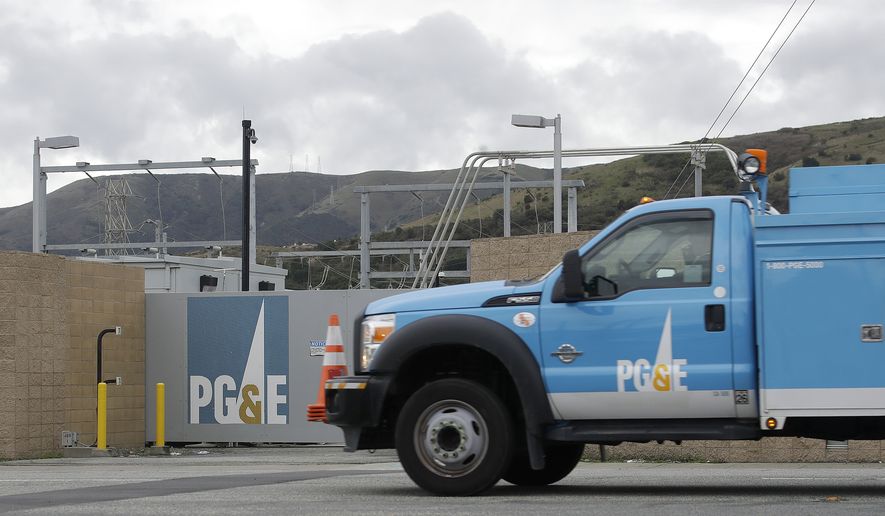Sierra Nevada foothills in Northern California were on edge — and in the dark — Tuesday after an electric utility company cut service to tens of thousands of customers there in an effort to prevent wildfires amid dry conditions and hot winds that forecasters expect to last through Thursday.
Pacific Gas & Electric, which was blamed last year for starting the deadliest wildfire in California’s history, cut service to 24,000 customers in three counties in the Sierra Nevada foothills. Six other counties could see precautionary outages if “red flag” fire danger warnings expand, the utility warned.
Red flag warnings were in effect north and east of San Francisco, where wind gusts were expected to reach 50 mph, the National Weather Service reported Tuesday.
Meanwhile, forecasters in Southern California were predicting brief bursts of hot Santa Ana winds east and west of Los Angeles. Nearly 90,000 electricity customers of Southern California Edison were advised that their areas could be subjected to precautionary outages.
“This is our first event of the year. It is expected to be short-lived and we are ready,” said Brian Humphrey, spokesman for the Los Angeles Fire Department.
Concerns about wildfires are mounting in the wake of November’s Camp Fire, which destroyed the town of Paradise in the Sierra Nevada foothills, killing 86 people and leveling nearly 15,000 homes. Many of those killed were elderly or disabled; the oldest was 99 years old.
An investigation by the California Department of Forestry and Fire Protection found that sparks from PG&E’s transmission lines had started the blaze.
According to data released by the state in July, the community has lost more than 90% of its population since the fire.
“The town is still pretty empty,” a clerk at the Paradise Dollar Tree told The Washington Times. “People are worried because it is fire season again.”
Paradise’s Taco Bell reopened just last week — the community’s only fast food restaurant.
“We’re here and we’re trying to help people get back on their feet,” manager Jim Voden told The Times. “The fire was just awful. The town is still pretty much gone. But we are trying.”
California’s three leading utilities began using preemptive outages to reduce wildfire risks earlier this decade. San Diego Gas & Electric started in 2013, Southern California Edison in 2017, with PG&E following later, according to the Los Angeles Times.
The Paradise Fire has caused major financial trouble for PG&E. The utility had plans to shut off power ahead of the fire but canceled the move after receiving complaints and demands for reimbursement for a preemptive outage it carried out the month before that affected 87,000 customers.
In January, the utility sought bankruptcy protection, saying it could not afford an estimated $30 billion in potential damages from lawsuits stemming from wildfires. Earlier this month, it agreed to pay $11 billion to insurance companies holding 85% of the claims from fires that include the Paradise blaze.
Leading California climatologists maintain that climate change is fueling the trend of hotter summers and warmer, drier autumns and thereby creating the tinderbox-like conditions that cause devastating blazes.
Daniel Swain, a researcher for the Center for Climate Science at the University of California-Los Angeles, tweeted that the Paradise Fire would not have occurred “if Northern California had received anywhere near the typical amount of autumn precipitation.”
⦁ This article is based in part on wire service reports.
• Dan Boylan can be reached at dboylan@washingtontimes.com.




Please read our comment policy before commenting.